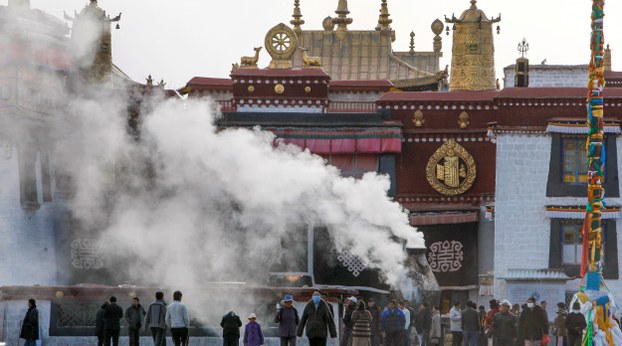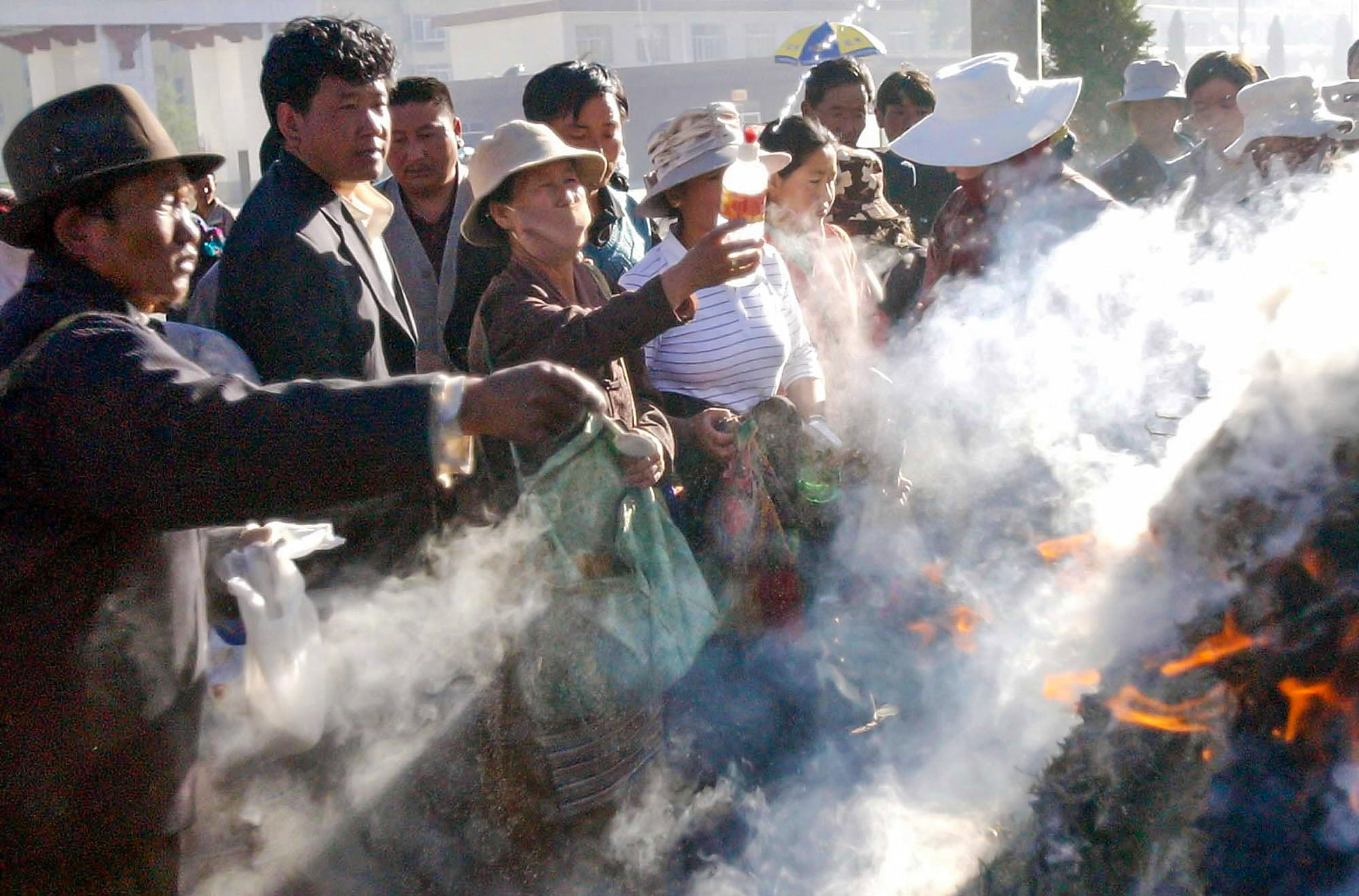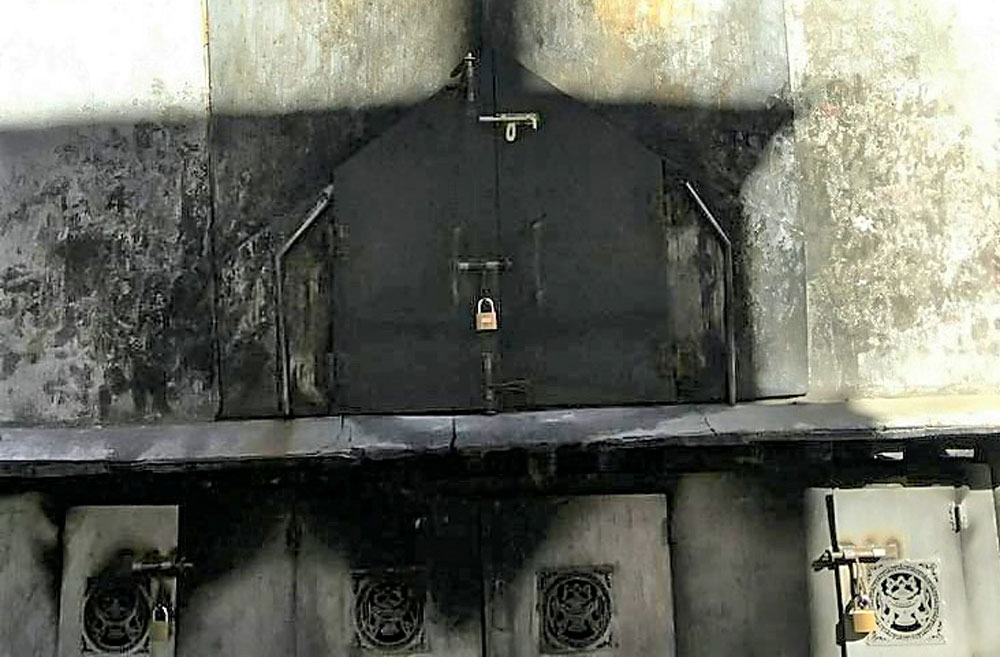




China is now banning offerings of burnt juniper boughs and other fragrant smoke outside the iconic Jokhang temple in Tibet’s regional capital Lhasa, with authorities citing concerns over air pollution, sources in the city say.
The move tightens restrictions over worship already in place at the world-famous pilgrimage site, which has seen a square in front of the Jokhang fenced off to prevent public prayer and other displays of devotion following construction work on areas outside the temple.
Two large structures set up in front of the Jokhang for performing smoke offerings, called Sang Sol in Tibetan, are now completely closed to worshipers who have traditionally conducted ceremonies each Wednesday and on other special occasions, a source living in Tibet told RFA this week.
“Chinese authorities in Lhasa claim that the indiscriminate burning of these offerings is harmful to the environment and pollutes the air,” RFA’s source said, adding that Chinese officials have held workshops beginning in November to raise public awareness of the issue.
“They have conducted propaganda programs on the roadside near the offering sites in front of the Jokhang, where official banners urge what they call the responsible practice of Sang Sol supported by ‘individual awareness and ‘education,’” the source said, speaking on condition of anonymity.
“The two structures built for Sang Sol ceremonies in front of the Jokhang meanwhile remain closed,” the source said.
The new restrictions at the Jokhang signal a growing pattern of Chinese control over traditional Tibetan religious practice and increasing attempts by Beijing to recast Tibetan Buddhism as a Chinese faith, experts and observers say.
During a lockdown in Lhasa in April to prevent the spread of COVID-19, two Chinese-style pavilions were installed in front of the Jokhang, prompting concerns that the introduction of foreign architectural elements in the temple complex might affect the Jokhang’s status as a UNESCO World Heritage Site
And on Feb. 17, 2018 a fire broke out in the temple compound, setting at least one building ablaze but sparing the central chapel that houses the temple’s central image, a famous statue of the Buddha brought to Tibet in the seventh century by the Chinese bride of the Tibetan emperor Songtsen Gampo.
